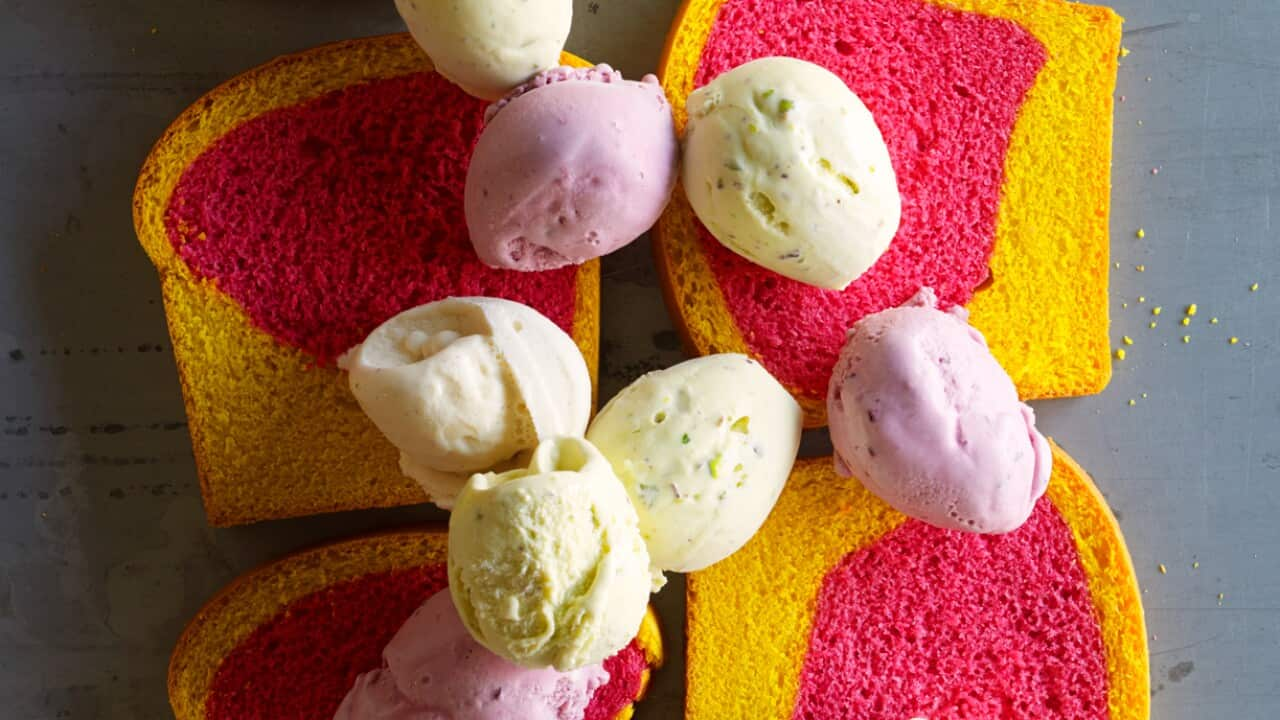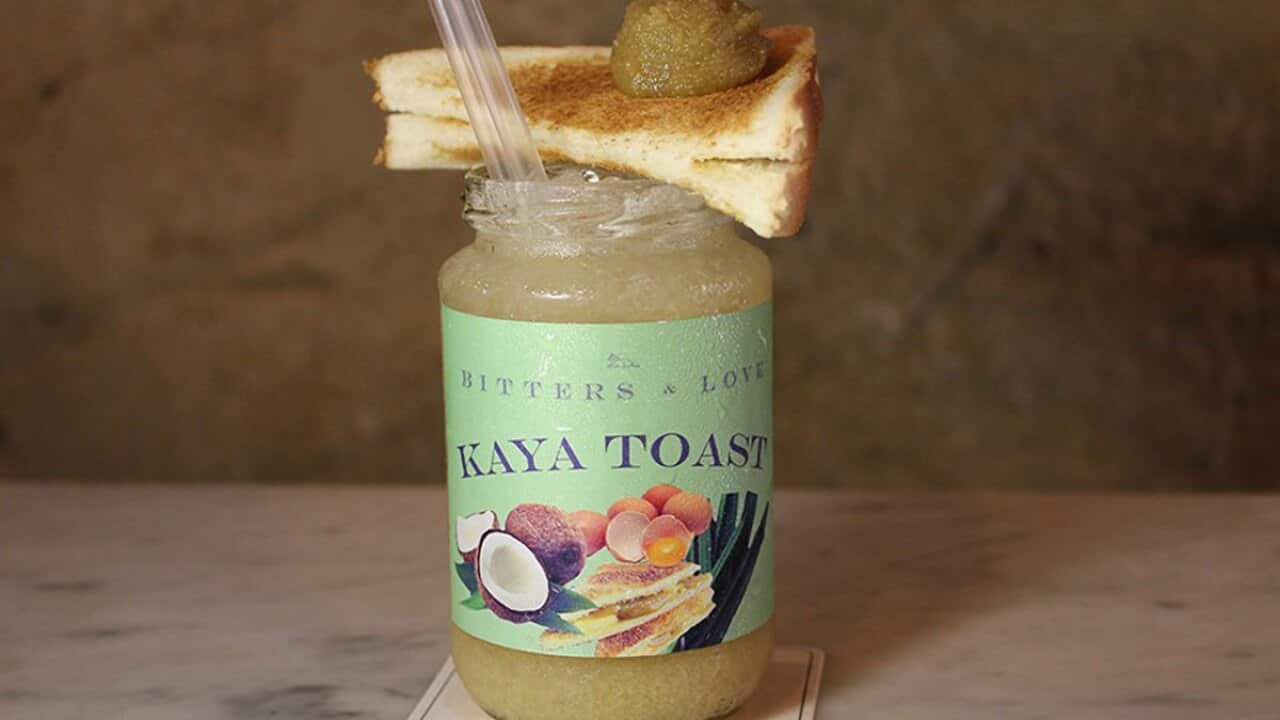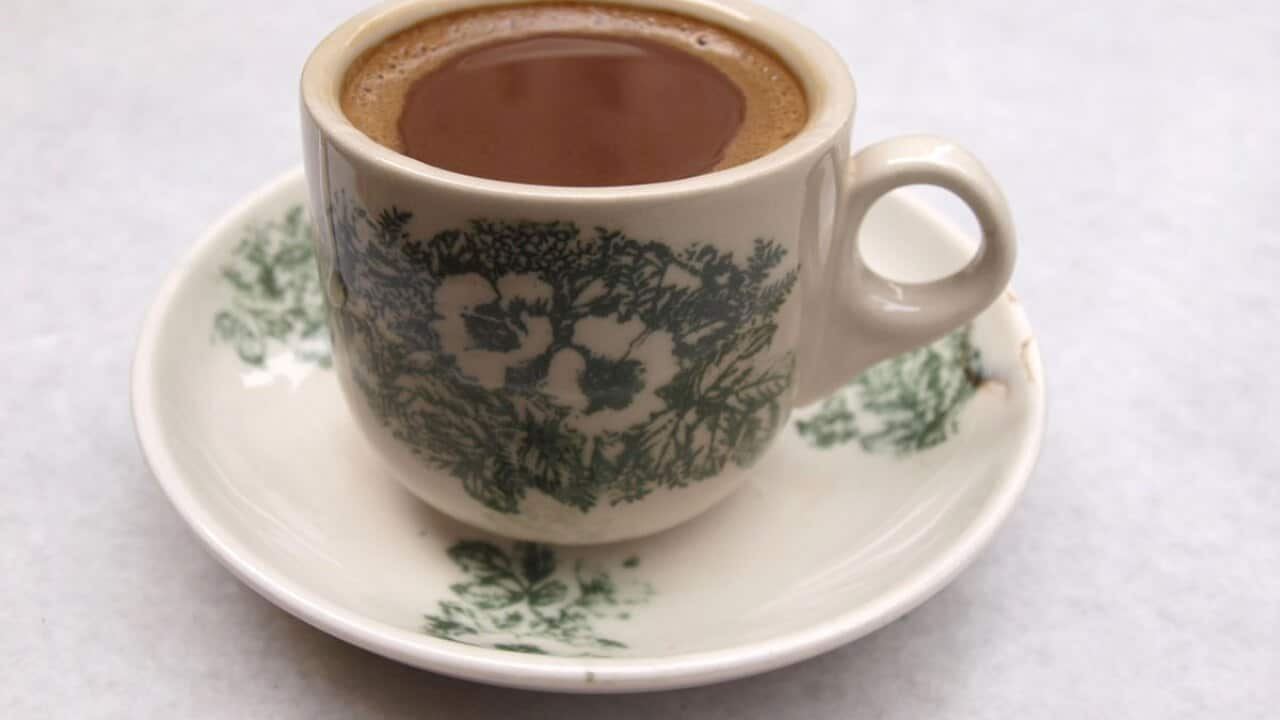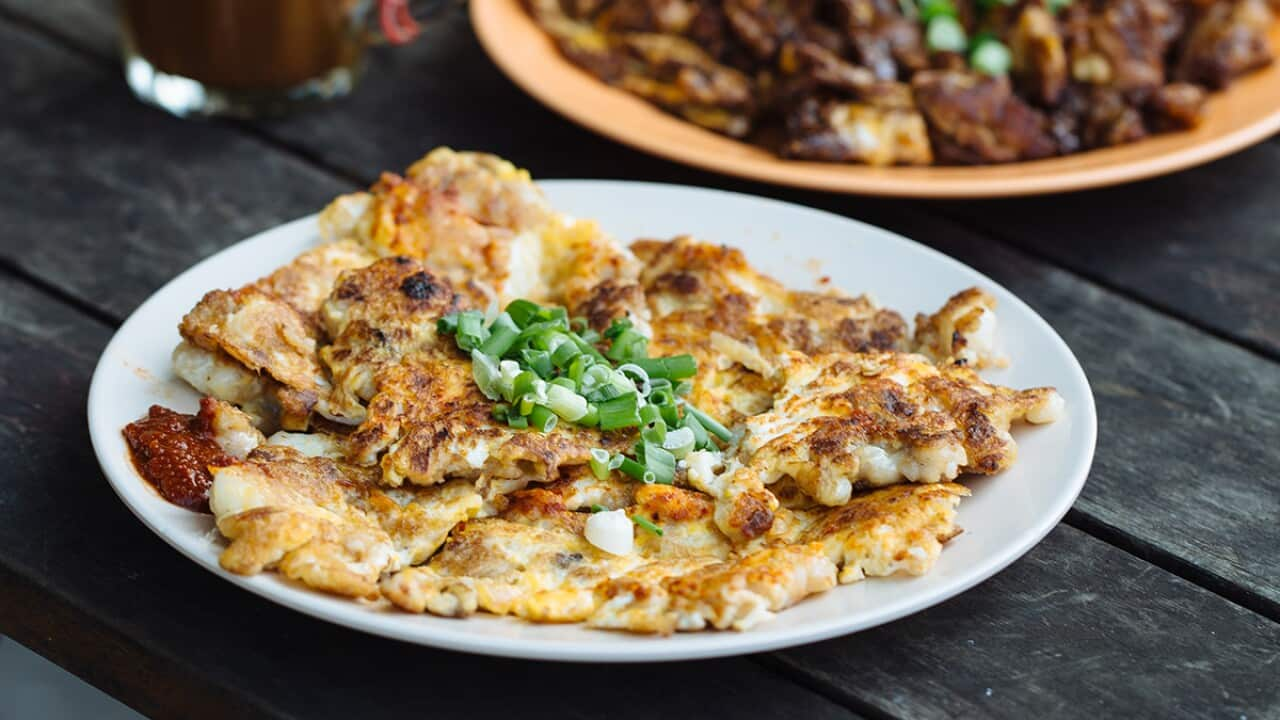Food has always been important to Australian chef Kimberly Tang. Born in Singapore with grandparents from China and Malaysia, Tang remembers being surrounded by great Asian food during her time growing up there.
"The love of food and how it brings a whole community around it is what I am most grateful for," says the young chef who currently works as a sous chef at in Melbourne.
Like most chefs, childhood memories spent in aromatic family kitchens were a catalyst for Tang's career choice. "During huge celebrations, like Chinese New Year or birthdays, both sides of my family (both my parents are one of six children) would gather in our house in Singapore and make traditional Chinese New Year snacks and pastries. The smell of coconut, chilli and pineapple still stay with me."
She would watch the women gather around a table to crimp curry puffs, make (sweet coconut snacks) and roll '' (egg-based pastries). "It's one of my favourite memories," she says.
Tang's multicultural ancestry and her life in both Singapore and Melbourne have given her a diverse palate, which she loves to utilise when she cooks for family and friends.
"I love cooking for all our friends and family, having fun and sharing our own love language through food," says Tang.
One of her favourite recipes reminds her of family and reunions. "My favourite dish that reminds me of home is chilli crab - without a doubt."
Kway chap is one of her mum's favourite dishes. She remembers eating her mum's version during trips back to Singapore.
Meanwhile, gravy chicken reminds her of her dad. "My grandma on my dad's side used to work in a tobacco factory when she was younger and had a group of close colleagues (about 10 of them who became close girlfriends) who enjoyed good food and always shared recipes with each other when conversing. This and other dishes always remind me of home."
The smell of coconut, chilli and pineapple still stays with me.
Tang now brings a taste of Singapore to her Australian home. One dish such dish is wanton mee (wonton noodles), which is commonly found in Singapore's hawker centres.
"My earliest memory of wanton mee was in primary school where I would go back annually to Singapore during school holidays."
To make wanton mee, egg noodles are cooked al dente and topped with thick slices of charred, caramelised char siu (roast pork) and choy sum. The dish is served with plump wontons in a clear broth and a side of pickled green chillies.
"It's the best," Tang says. "I have two brothers, one of them is a chef too and the three of us have a food bucket list we tick off every time we return to Singapore. We ALWAYS eat wonton mee. I remember returning to Singapore for the first time [after moving to Australia], we queued up in line at a food centre in Singapore ordering bowl after bowl [of wonton mee] and my wonton mee-fanatic brother cried after he had the first nostalgic bite."
Tang puts her brother's emotion down to the nostalgia of eating at a speciality stall in a hawker centre. "You are able to choose the flavour you feel like on the day and choose the size of the plate, the smells, the grease, the flavour...everything reminds me of home."
Her favourite wonton mee dish is from a stall called Yi Shi Jia Wanton Mee at the Kovan 209 Market and Food Centre in Singapore's northeast. Yi Shi Jia Wanton Mee is known for adding Sinsin tomato sauce (which has more vinegar and sugar than regular sorts) to its wonton mee. "Using tomato sauce or ketchup in wonton mee sometimes is frowned upon as authentic wonton mee should not have ketchup in it."
There's nothing else in the world like it.
Tang explains that a true wonton-mee sauce has a unique sweetness, saltiness and sourness that keeps you wanting more. But she doesn't think that using the tomato sauce is a deal-breaker.
"I know my grandpa would add ketchup [tomato sauce] to spaghetti bolognese and maybe that's why we love it too."
Tang doesn't make wanton mee at home too often because it doesn't hit the spot like it does when she eats it in Singapore. However, when she does, she buys char siu from a Chinese restaurant, cooks fresh egg noodles and makes her own special sauce. She makes pork wontons (which she fries or boils) and a broth to drink with the wontons.
"It's a perfect balance of springy egg noodles, rich, garlicky oil and tomato sauce, clean broth and boiled or fried wontons to cleanse the palate," Tang says. "The addition of char siu that is delectably tender and caramelised with the end pieces slightly burnt and crispy together with the fresh choy sum to me is the best. There's nothing else in the world like it."
Kim Tang's wanton mee
Serves 4
Ingredients
Stock
- 115 g anchovies
- 600 g water
- 2 cloves of garlic, lightly bashed
- ½ thumb-sized piece of ginger, lightly bashed
Wontons
- 16 wonton skins
- 150 g pork mince
- 150 g peeled and deveined prawns
- ½ bunch chives
- 2 tbsp soy sauce
- ¼ tsp ground white pepper
- 1 tsp sesame oil
- 1 egg
- 1 tsp grated ginger
- ¼ tsp salt
- ½ tsp sugar
- ½ tbsp oyster sauce
Other ingredients
- 4 tsp pork lard
- 225 g char siu (roast pork), sliced finely – keep the oil
- 4 tsp shallot/garlic oil (4 cloves minced garlic or 1 sliced shallot with 3 tbsp vegetable oil)
- 225 g Chinese mustard greens
- 1 tsp salt
- 1 tsp sugar
- 4 bundles fresh egg noodles
Sauce (serves 1)
- 2-3 tbsp tomato sauce (Sinsin brand or a sweetened tomato sauce)
- 1 tsp oyster sauce
- 1 tbsp light soy sauce
- ½ tsp sesame oil
- 1 tbsp Lao Gan Ma crispy chilli oil
- ¼ tsp chicken stock
- 1 tbsp peanut oil
- 4-6 tbsp stock
Method
- Boil the stock ingredients for 1 hour. Strain and keep stock in a bowl. Set aside.
- Prepare wontons by mixing all wonton ingredients together (except the wonton wrappers). Place a teaspoon of the pork mixture in the middle of each wonton wrapper. Moisten the edges of the wrapper with water. Seal the edges to form a triangle shape. Bring the two corners down and pinch to form a Chinese ingot. (You may also keep the wontons in a triangle shape.) Repeat the same steps until you use up all the pork mixture.
- Boil water in a pot and cook the wontons in batches for about 1-2 minutes until cooked. Stir occasionally to prevent them from sticking to the bottom of the pot. Drain and set aside. You can also fry the wontons.
- Wash the mustard greens. Cut into short lengths and blanch in a saucepan together with the salt and sugar. Using a wire sieve, remove greens and immerse in cold water for 5 minutes. Drain.
- For the shallot or garlic oil, heat the oil in a pan and fry the sliced shallots or minced garlic over low-medium heat. If you're using shallots, gently fry them. If you're using garlic, fry it until it starts to turn lightly golden and crisp. Immediately transfer shallots or garlic with the oil to a heat-proof bowl and set aside.
- Bring a large saucepan of water to a boil over high heat. Loosen a bundle of noodles and put the bundle into the boiling water. Stir with a wooden chopstick for 1 minute, then scoop it out with a wire-mesh ladle. Immerse in a large basin of cold water for 12 minutes. Then, boil the noodles for another 15 seconds. Remove and drain. Repeating the process for the remaining 3 bundles of noodles.
- Stir noodles in a bowl of the prepared sauce mixture.
- Transfer noodles to a serving plate. Garnish with mustard greens and slices of char siu. Finish with pork lard and garlic oil. Repeat the process with remaining servings.
- Serve each plate with steamed or fried wontons in a small bowl of broth.
Note
- If you can't find Sinsin tomato sauce, use a sweetened tomato sauce from an Asian grocery store or regular supermarket.
WHEN IN SINGAPORE

Please 'kueh' here for psychedelic treats









